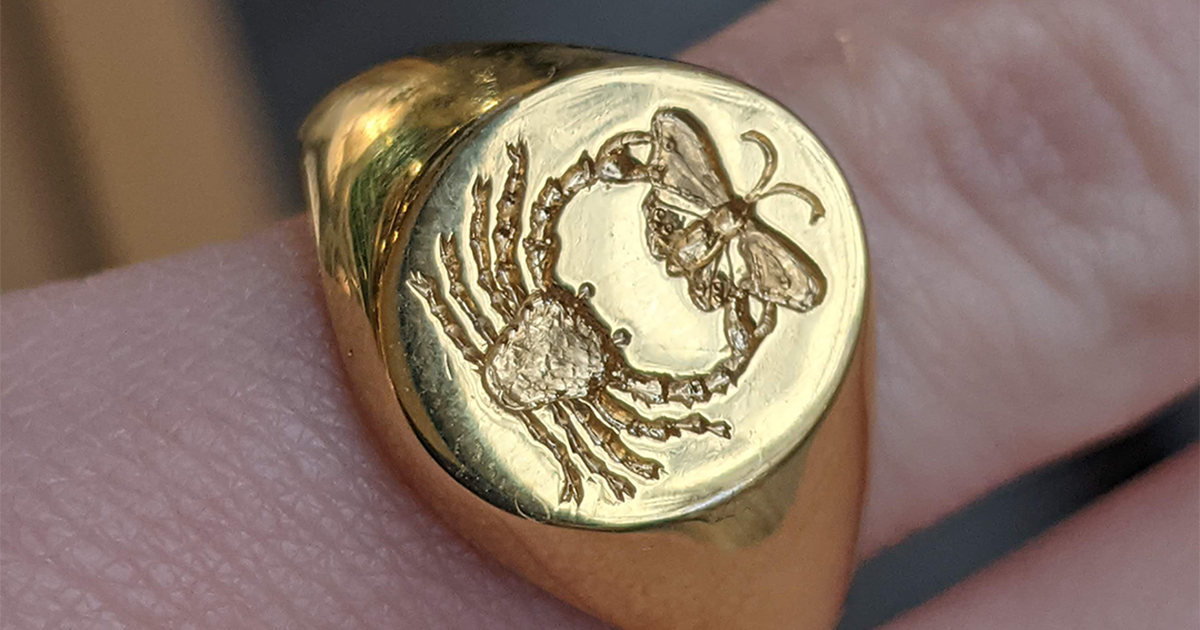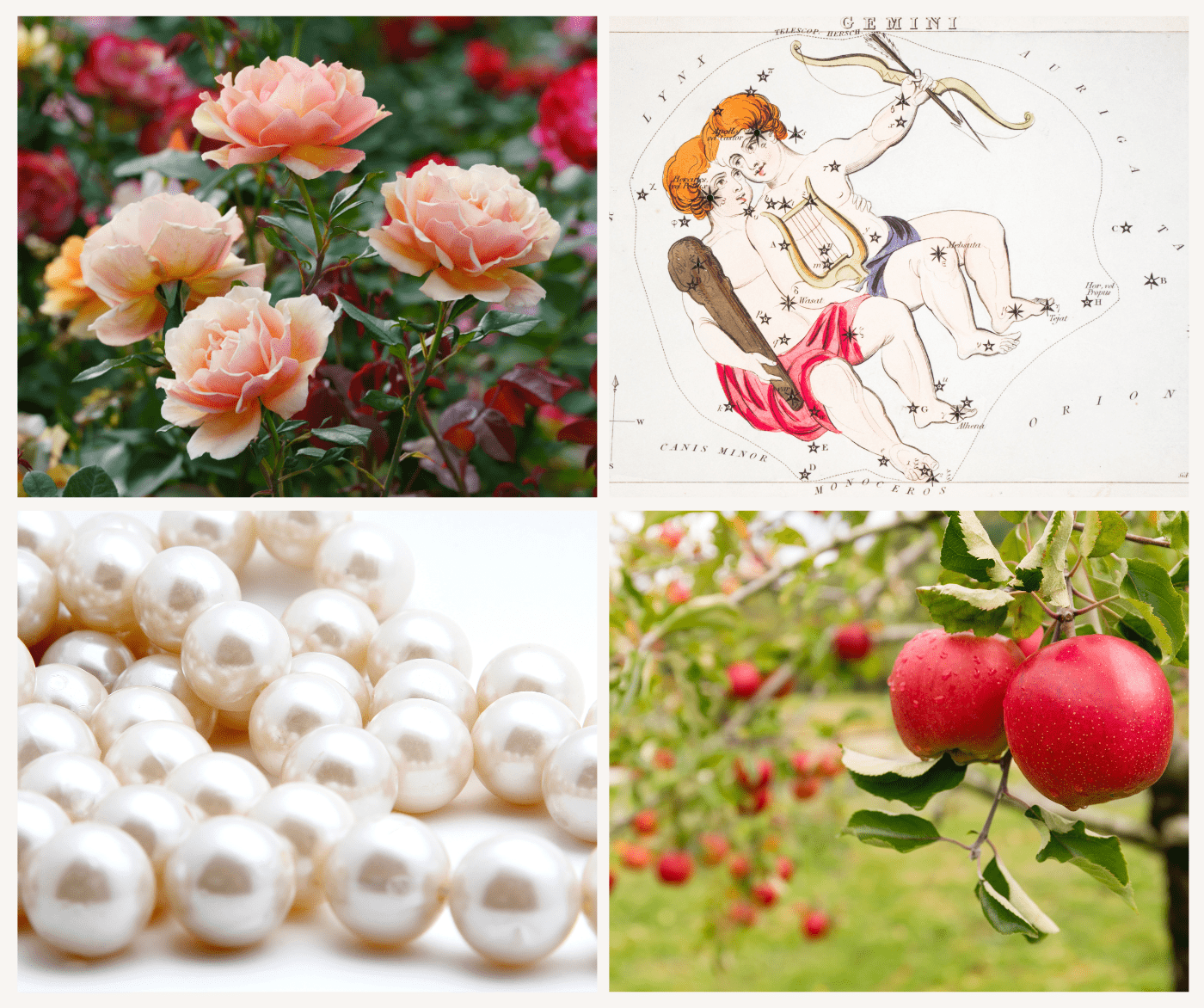As we head from Midsummer into the warmest days of the year, we explore the symbolism behind the Zodiac signs Gemini and Cancer. As summer babes, those born in the abundance of June and July have the pick of the crop when it comes to birth flowers and trees, and their birthstones Pearl and Ruby are some of the most treasured gems in the natural world. Come with us as we explore their symbols and dig deeper into the meaning behind them.


Gemini Birthstone: Pearl
As Grace Kelly once called them, pearls or the “Queen of Gems”, are a luminescent birthstone born in the depths of the sea. The only gem to come from living creatures, today these sought-after treasures are cultured and grown to ensure their perfect shape. Known for their natural radiance, pearls symbolise grace, elegance, and are said by some to be a reflection of the soul's untainted purity.
The pearl appears time and time again throughout history and mythology, from the Persians to the Egyptian Queen Cleopatra. Legend has it that in a moment of decadence, she plucked a pearl from her earring and dissolved it into a glass of wine to drink; a bold act that symbolised her wealth to an enraptured Mark Antony. In Ancient Chinese folklore, pearls are said to form inside the heads of dragons, and by slaying these beasts one could secure their prized ownership. Other cultures like Japan, claim that pearls were formed from the tears of nymphs, mermaids, and in Biblical legend, from Adam and Eve themselves.


Gemini Birth Flowers: Rose & Honeysuckle
A timeless symbol of love, the rose represents all things pure and romantic. In Ancient Greece, it was sacred to the goddess Aphrodite and was her emblem of beauty. It is said that when her lover Adonis was fatally-wounded, rose bushes grew from her tears and his blood. Famously used in Shakespearean texts from sonnets to Romeo & Juliet, the rose has etched its name onto the pages of love. With a kaleidoscopic array of colours, each rose has its own individual symbolism: scarlet is a declaration, pink embodies perfection, and white is love and innocence.
Believed to symbolise happiness, the honeysuckle was heralded by the Victorians as representing 'sweet disposition', thanks to their fragrant aroma. Like the rose, the honeysuckle is also associated with love and devotion, and its delicate tendrils and falling petals are said to resemble a lover's embrace.


Gemini Birth Trees: Apple & Oak
Among June's verdant landscape, the apple tree stands tall as a guardian of ancient wisdom and immortality. Most closely associated with the Garden of Eden, the apple was the forbidden fruit plucked from the Tree of Knowledge. It was an important tree in Ancient Greek mythology too, closely associated with the Goddess of Love, Aphrodite. In fact, in classical customs of the time, throwing an apple at someone was seen as a declaration of love and catching that apple was viewed as an acceptance of the love offered.
As far back as the Celtic Druids, the oak tree was worshipped at rituals and magical gatherings. It is suggested that the word Druid derives from the “knower of the oak tree”. Later, as Christianity replaced paganism, the Green Man motif was popularised. Said to symbolise the cycle of life, death, and re-birth, the face made from oak leaves, can be found adorning the walls of churches all across England.


Cancer Birthstone: Ruby
The deep, dark red of the ruby is believed by many cultures to symbolise life itself, as the colour so closely resembles blood. Linked with power, wealth, and protection, the ruby also has a sweeter side and is said to symbolise love and passion.
Heralded in Indian culture, the ruby or ratnanayaka, is regarded as the lord or king of precious stones. In Hinduism, these beautiful gems are so treasured that each stone is divided into castes according to clarity and beauty - lower, middle, and upper class - much like society itself. Those who offered rubies to Krishna, the God of Love, were said to be reincarnated as an emperor in their next life.


Cancer Birth Flowers: Larkspur & Water Lily
From Buddhists to Monet's watercolours, the water lily is a meaningful source of inspiration. Emerging from the water with roots hiding below, this flower is most commonly associated with birth, resurrection, and in Buddhism symbolises the spiritual journey to enlightenment. Often found bearing white petals, water lilies are also said to represent purity and innocence.
The larkspur is a symbol of positivity, youth, and the unbreakable bonds of love. Each shade of larkspur has a nuanced meaning, from the white which represents joy, purple which symbolises love's embrace, and the pink which is more commonly associated with fickleness or sudden change.


Cancer Birth Trees: Elm & Holly
The elm tree has been used as powerful symbol by many cultures throughout history. The first literary reference to the tree comes from Homer's The Iiliad, where it symbolises both life and death; a branch of the elm saves Achilles from drowning, while trees are planted outside the tombs of fallen soldiers from the Trojan War. In Chinese folklore too, the elm is a symbol of divination and protection, and trees are similarly planted in front of temples. More recently, they have become known as a symbol of resistance and hope, with a Liberty Elm planted in an act of rebellion by the Sons of Liberty in the Revolutionary Wars of America.
Contrary to popular belief, the holly is more closely linked with July than with the winter months surrounding Christmas. Before Medieval times when Christianity adopted the leaf as symbolic of 'Christ's thorn', the tree was an important part of Celtic mythology. Said to symbolise peace and goodwill, it was also believed to act as protector thanks to its resistance against lightning.
Inspired to create a signet ring with the symbols that mean the most to you? Get in touch at info@rebussignetrings.co.uk or book an appointment at our Hatton Garden workshop or via Zoom to find out more.

